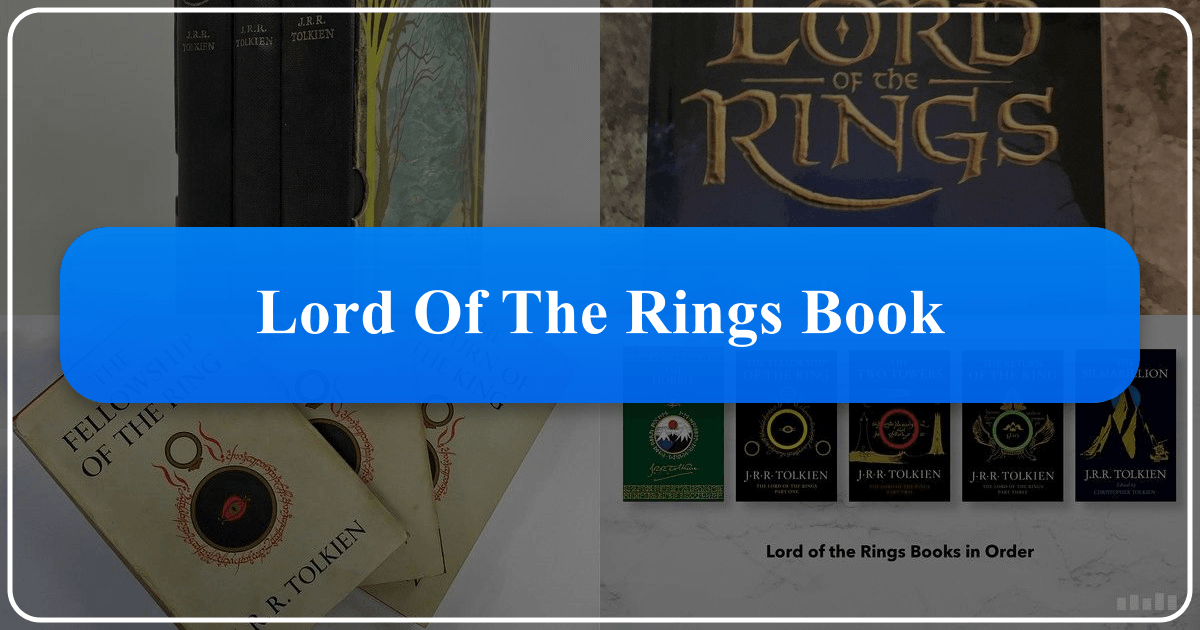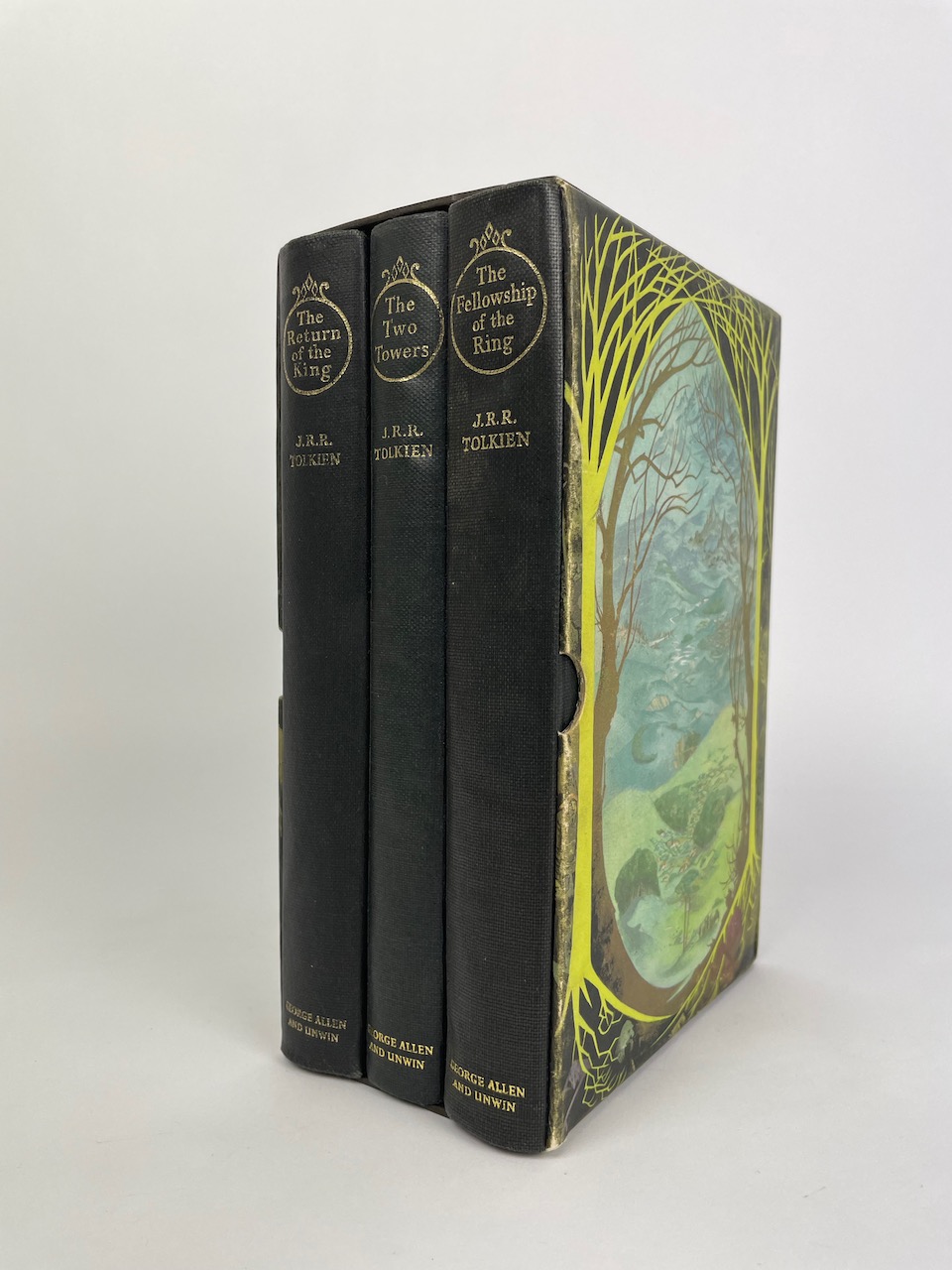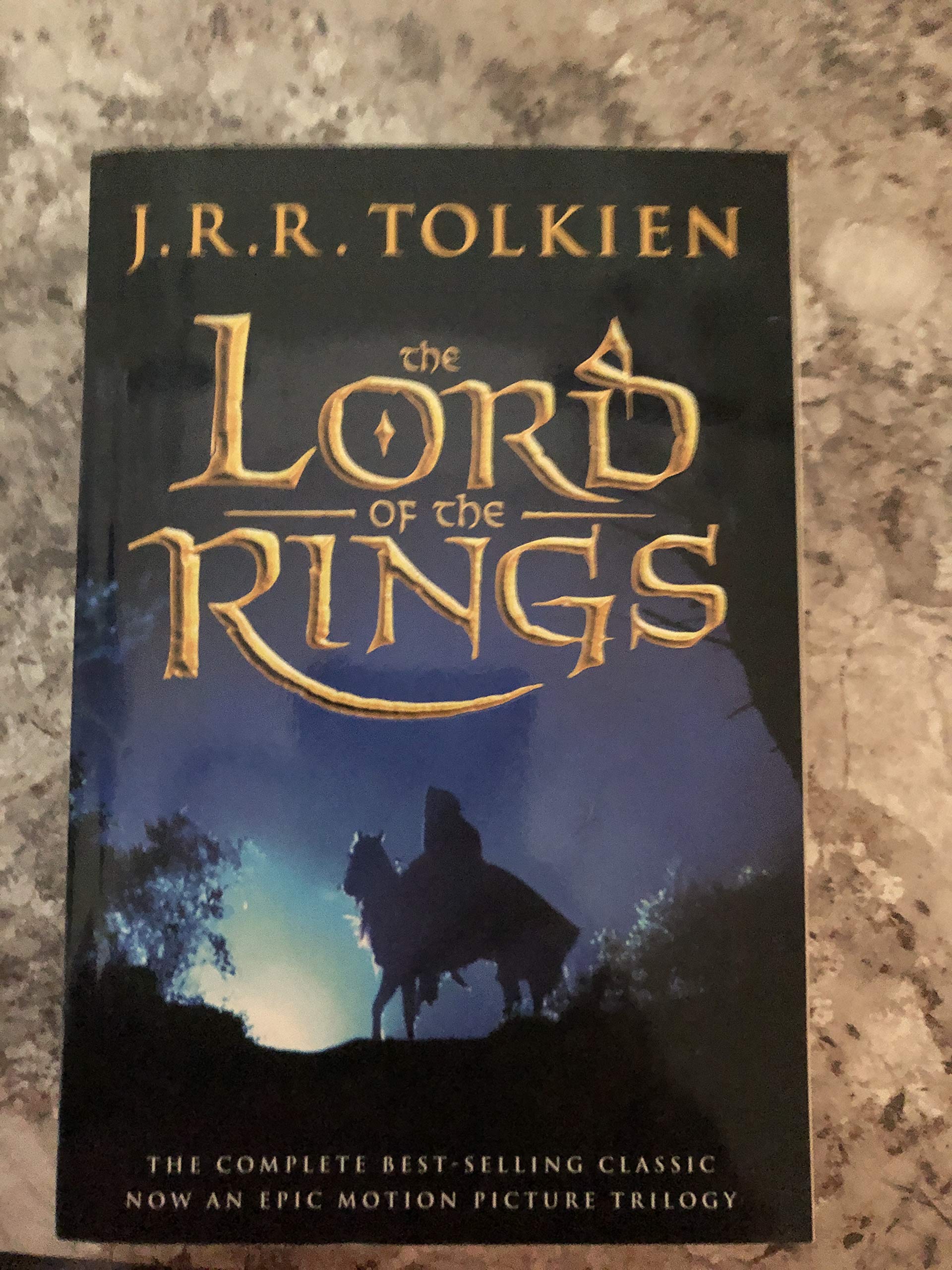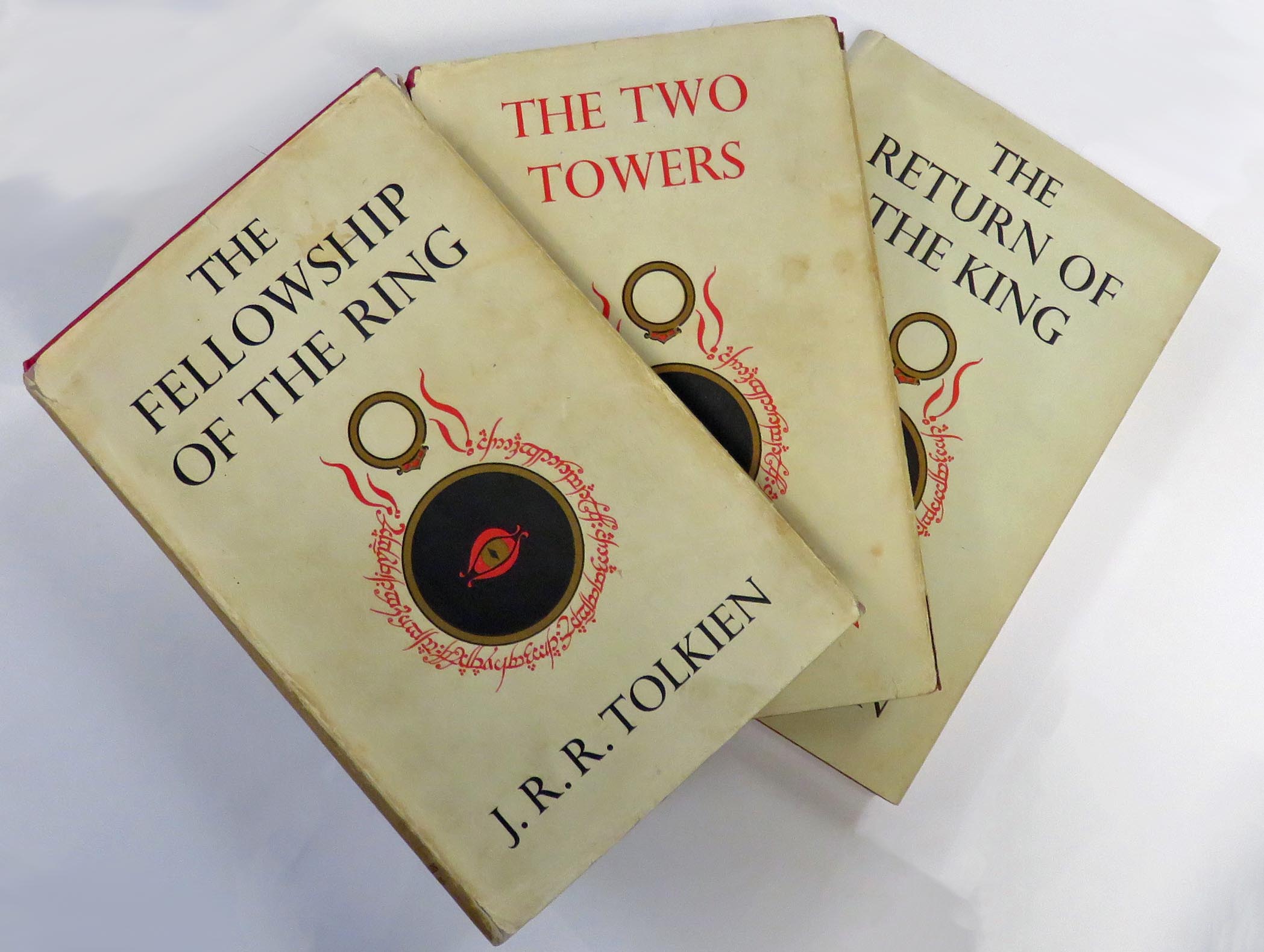The Lord of the Rings Book: A Comprehensive Guide

J.R.R. Tolkien’s The Lord of the Rings is more than just a book; it’s a cultural phenomenon, a literary masterpiece, and a cornerstone of the fantasy genre. This comprehensive guide explores the various facets of this epic work, delving into its literary merit, cultural impact, and the vast legendarium it spawned. We’ll examine the books themselves, the author’s life and influences, the educational value and life lessons within the text, the role of libraries in preserving Tolkien’s legacy, and finally, the enduring cultural impact of The Lord of the Rings.

The Books: A Journey Through Middle-earth
The Lord of the Rings, comprised of The Fellowship of the Ring, The Two Towers, and The Return of the King, is a high fantasy epic. The narrative unfolds across a richly detailed world, Middle-earth, and chronicles the quest to destroy the One Ring, an artifact of immense power forged by the Dark Lord Sauron. The story intertwines elements of adventure, heroism, mythology, and philosophy, creating a captivating and enduring narrative.

The narrative is not solely confined to the main trilogy. Tolkien’s The Hobbit, a prequel, introduces readers to Bilbo Baggins and the world of Hobbits, setting the stage for the larger epic. It offers a lighter, more whimsical tone, making it an ideal starting point for those new to Tolkien’s world.
Beyond the core narratives, Tolkien’s legendarium expands dramatically. Works like The Silmarillion delve into the creation of Middle-earth and the events of the First Age, providing a deep, multifaceted history that enriches the understanding of the later narratives. While dense and demanding, The Silmarillion reveals the intricate tapestry of myth and legend that underpins Tolkien’s universe, offering insights into the history of the Elves, Dwarves, and Men, as well as the origins of Sauron’s power.
Unfinished Tales of Númenor and Middle-earth compiles various incomplete stories and essays left by Tolkien, offering additional perspectives and depth to the established narrative. These tales, often edited and completed by his son Christopher Tolkien, shed light on untold events, characters, and the intricate history of Middle-earth. This collection is particularly valuable for understanding the Second Age of Middle-earth, the era depicted in Amazon’s Rings of Power.

Genres and Classifications
The Lord of the Rings transcends simple genre classification. While predominantly high fantasy, it also incorporates elements of adventure, epic poetry, mythology, and even philosophical commentary on good versus evil, the corrupting influence of power, and the nature of heroism. Its multifaceted nature allows for diverse interpretations and engagement across various reader demographics.
The Author: J.R.R. Tolkien and his Inspirations
J.R.R. Tolkien’s background significantly shaped his writing. A professor of Anglo-Saxon at Oxford, he possessed an intimate knowledge of ancient languages and mythologies. His academic expertise is evident in the intricate linguistic structures and rich mythology of Middle-earth. His deep appreciation for ancient languages, particularly those of Northern Europe, informed the creation of the Elvish and Dwarvish languages featured in The Lord of the Rings. These languages weren’t simply decorative; they possess their own grammars, histories, and cultural contexts that provide a compelling sense of depth and realism to Middle-earth.
Tolkien’s experiences during World War I undoubtedly influenced his depictions of war and its devastating impact on individuals and civilizations. The shadow of war looms large over The Lord of the Rings, impacting the narrative and shaping the characters’ struggles.
Writing Style and Influences
Tolkien’s writing style is characterized by its detailed descriptions, lyrical prose, and use of invented languages and mythology. His prose is rich, evocative, and often poetic, immersing the reader in the details of Middle-earth. His style draws heavily from classical epic poetry, Norse mythology, and biblical narratives, creating a blend of familiar and novel elements. This unique blend sets his work apart, creating a unique voice and imaginative world that continues to captivate readers decades later.
Reading and Learning: Exploring Middle-earth’s Themes
The Lord of the Rings offers a rich tapestry of themes suitable for discussion. The central conflict between good and evil, embodied by the struggle against Sauron, serves as a potent allegory for the human condition. The journey itself becomes a metaphor for life, with its trials, tribulations, and ultimate triumph.
Educational Value and Life Lessons
The epic quest of Frodo and the Fellowship imparts numerous life lessons. The importance of courage, loyalty, friendship, and sacrifice are prominently displayed. The corrupting nature of power, the dangers of unchecked ambition, and the redemptive power of selflessness are explored with profound depth. The narrative offers a framework for exploring moral dilemmas and ethical challenges, making it valuable for fostering critical thinking and personal growth.
Reading Habits and Engagement
The Lord of the Rings is a substantial undertaking. Readers should approach it with patience, allowing ample time for immersion in the world and characters. Multiple readings are often recommended, as the layers of detail and thematic depth unfold with each encounter. Discussion groups and online communities offer opportunities for deeper engagement with the text and its diverse interpretations.
Libraries and Archives: Preserving Tolkien’s Legacy
Libraries play a pivotal role in preserving Tolkien’s works and the vast legendarium he created. Physical libraries house countless editions of his books, and digital libraries provide wider access to his work. Archives dedicated to Tolkien’s life and works safeguard original manuscripts, letters, and artwork, offering invaluable resources for scholars and enthusiasts. These libraries facilitate research, critical analysis, and the preservation of Tolkien’s significant contribution to literature.
Public, Digital, and Specialized Collections
Extensive collections of Tolkien’s works, along with related scholarship and materials, can be found in major public libraries, university archives, and specialized collections dedicated to fantasy literature. These collections ensure the accessibility and ongoing study of Tolkien’s work for future generations.
Cultural Impact: The Enduring Legacy of Middle-earth
The Lord of the Rings’s cultural impact is undeniable. It popularized the fantasy genre, inspiring countless authors, artists, filmmakers, and musicians. Its influence extends far beyond literature, shaping popular culture and influencing various aspects of society.
Literary Influence and Adaptations
The influence on subsequent fantasy literature is immense. The epic quest, richly detailed world-building, and exploration of moral and philosophical themes set a new standard for the genre. Numerous books, movies, TV series, games, and other forms of media have drawn upon Tolkien’s work for inspiration, extending its legacy into modern popular culture.
Awards and Recognition
The Lord of the Rings has received numerous accolades, including critical acclaim and significant awards. Its enduring popularity and ongoing influence have solidified its status as a modern classic. The numerous awards and recognition cement its place in literary history.
Communities and Fandom
A vibrant and engaged community of fans, or Tolkienites, exists globally. These communities share their love for Tolkien’s works through discussion forums, online communities, conventions, and creative endeavors such as fan fiction and artwork. This dedicated fandom demonstrates the profound and lasting impact of Tolkien’s creative vision.
In conclusion, The Lord of the Rings remains a powerful force in literature and popular culture. Its enduring appeal stems from its intricate world-building, memorable characters, thought-provoking themes, and its pioneering role in shaping the fantasy genre. Its legacy continues to inspire and captivate readers and viewers across generations. Lbibinders.org provides an excellent resource for exploring Tolkien’s work in greater detail.